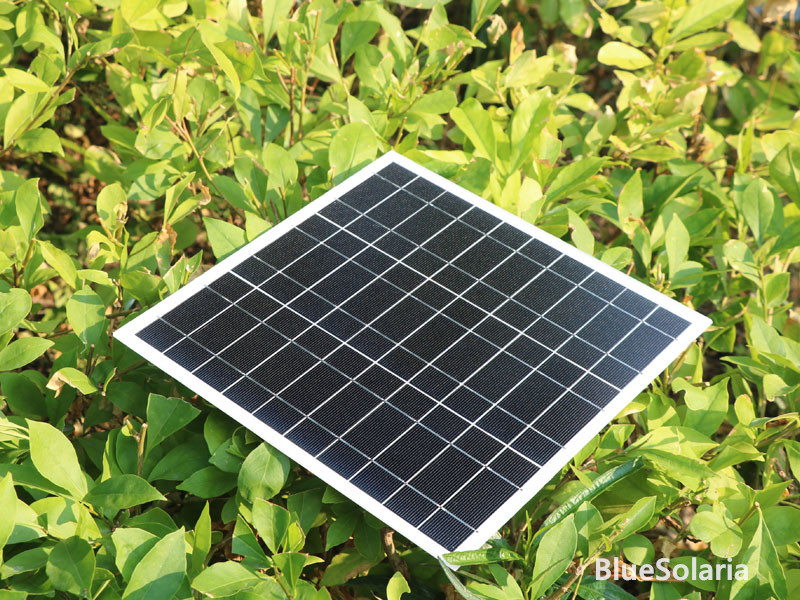Sunlight shines on the semiconductor p-n junction to form new hole-electron pairs. Under the action of the built-in electric field in the p-n junction, the photo-generated holes flow to the p-zone, and the photo-generated electrons flow to the n-zone, when the circuit is turned on, a current is generated. This is the working principle of photovoltaic effect solar cells.
 Manufacturer of Customized Small Solar Panels - BlueSolaria
Manufacturer of Customized Small Solar Panels - BlueSolaria
There are two methods for solar power generation, one is photothermal-electric conversion, and the other is direct photoelectric conversion.
1. Photothermal power conversion
The light-heat-electric conversion method uses the heat generated by solar radiation to generate electricity. Generally, the solar heat collector converts the absorbed heat into the vapor of the working fluid, and then drives the steam turbine to generate electricity. The former process is a light-heat conversion process; the latter process is a heat-electric conversion process, which is the same as ordinary thermal power generation. The disadvantage of solar thermal power generation is its low efficiency and high cost. It is estimated that its investment is at least 5-10 times more expensive than ordinary thermal power plants. A 1000MW solar thermal power station requires an investment of 2 to 2.5 billion US dollars, and the average investment of 1 kW is 2000 to 2500 US dollars. Therefore, it can only be applied to special occasions on a small scale, and large-scale utilization is very economically uneconomical and cannot compete with ordinary thermal or nuclear power plants.
2. Direct photoelectric conversion
Solar cells generate electricity based on the photoelectric properties of specific materials. Black bodies (such as the sun) radiate electromagnetic waves of different wavelengths (corresponding to different frequencies), such as infrared, ultraviolet, visible light, and so on. When these rays are irradiated on different conductors or semiconductors, photons interact with free electrons in the conductors or semiconductors to generate electric current. The shorter the wavelength and the higher the frequency of the rays, the higher the energy they have. For example, ultraviolet rays have much higher energy than infrared rays. However, not all wavelengths of radiation energy can be converted into electrical energy. It is worth noting that the photovoltaic effect has nothing to do with the intensity of the radiation, and current can only be generated when the frequency reaches or exceeds the threshold that can produce the photovoltaic effect. The maximum wavelength of light that can cause a semiconductor to produce a photovoltaic effect is related to the band gap of the semiconductor. For example, the band gap of crystalline silicon is about 1.155 eV at room temperature.
Therefore, light with a wavelength of less than 1100 nm can produce photovoltaic effects on crystalline silicon.
Simply put, the principle of photovoltaic power generation is to use solar cells to absorb sunlight with a wavelength of 0.4 μm to 1.1 μm (for silicon crystals), and directly convert light energy into electrical energy output.
Posted by Julie Huang of Blue Solaria
Blue Solaria is a leading solar panel manufacturer in China. Dedicated to the design, engineering, manufacturing and sales of
small solar panels since 2005.
https://www.bluesolaria.com
